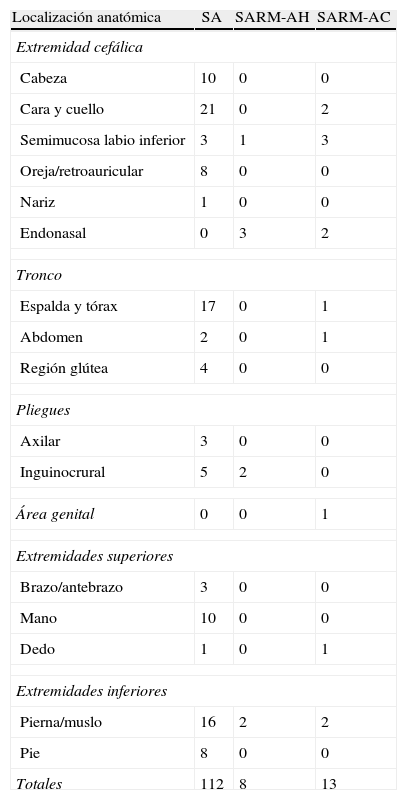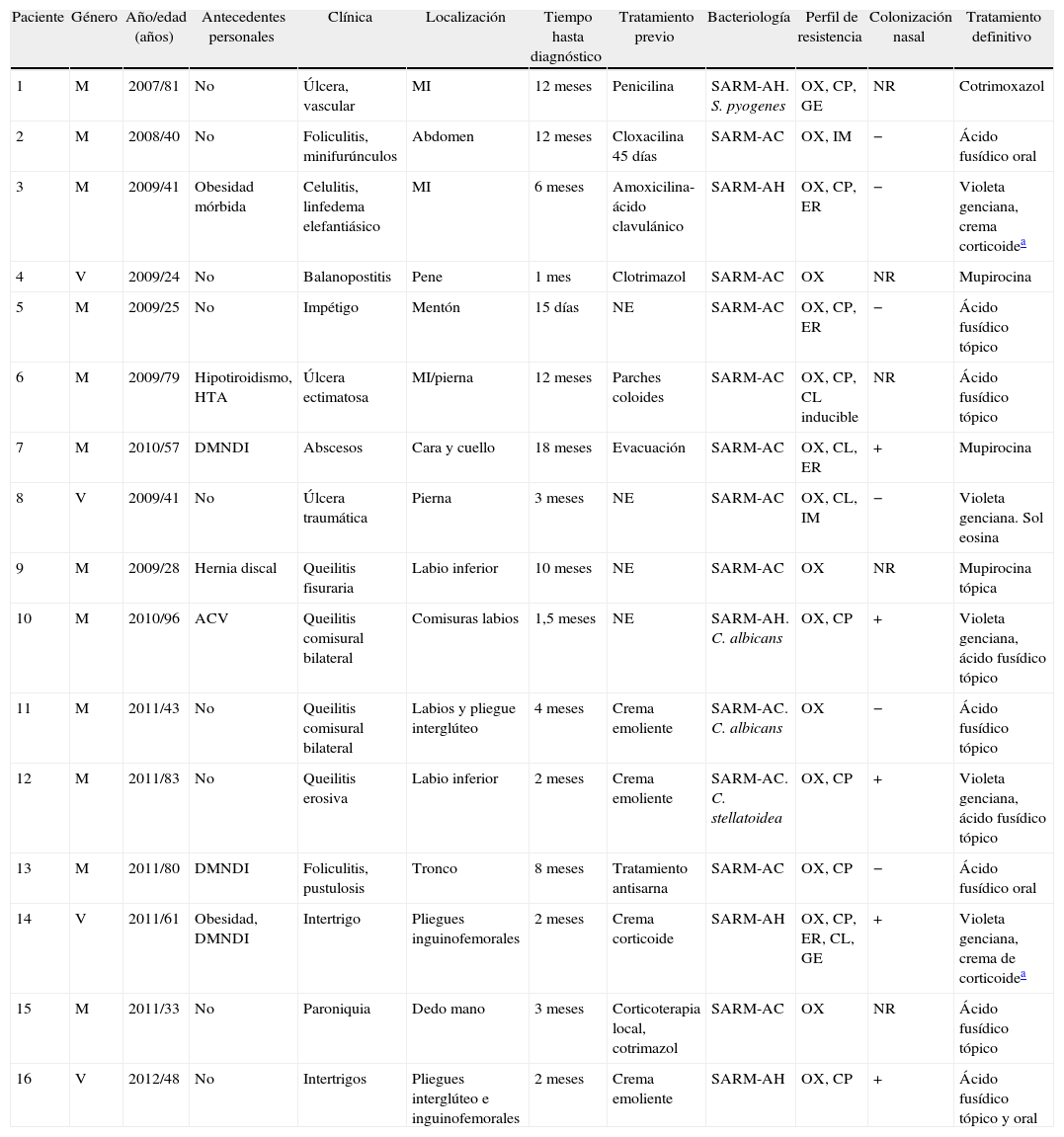El aumento de las infecciones por Staphylococcus aureus resistente a meticilina a nivel mundial es un importante reto sanitario al haber pasado de ser un patógeno estricto hospitalario a estar asociado a la comunidad. En las infecciones causadas por él, la piel y los tejidos blandos son los órganos más frecuentemente afectados.
ObjetivoDeterminar la presencia de Staphylococcus aureus resistente a meticilina en las enfermedades de piel tratadas en consultas de Dermatología.
Material y métodoEfectuamos un estudio retrospectivo, descriptivo y observacional de 128 pacientes con infecciones cutáneas primarias o secundarias por Staphylococcus aureus diagnosticados en 3 consultas externas de Dermatología del Hospital General de Segovia.
ResultadosSe encontraron 16 casos con cultivo para Staphylococcus aureus resistente a meticilina (12,5%), de los cuales 7 fueron del medio hospitalario y 9 asociados a la comunidad, siendo 5 portadores nasales.
ConclusionesDestacamos la afectación del labio inferior en 4 casos, el retraso diagnóstico en la mayoría de los pacientes y la buena respuesta al ácido fusídico y a la tintura de violeta de genciana.
The worldwide increase in infections due to methicillin-resistant Staphylococcus aureus is a major health challenge. The infection is no longer solely hospital-acquired and has become community-acquired. The most commonly affected organs in methicillin-resistant Staphylococcus aureus infections are the skin and soft tissues.
ObjectiveTo determine the presence of methicillin-resistant Staphylococcus aureus in skin diseases in Dermatology outpatient clinics.
Material and methodWe carried out a descriptive, retrospective study of 128 patients with primary or secondary infectious skin conditions with positive culture to coagulase-positive Staphylococcus aureus diagnosed in 3 Dermatology outpatient offices in the General Hospital of Segovia.
ResultsMethicillin-resistant Staphylococcus aureus was isolated in 16 patients (12.5%), of whom 7 were hospital-acquired, and 9, community-acquired. Of these, 5 were nasal carriers of methicillin-resistant Staphylococcus aureus.
ConclusionsWe stress the involvement of the lower labial mucosa in 4 patients, delayed diagnosis in most patients, and the good response to fusidic acid and topical gentian violet.
Artículo
Comprando el artículo el PDF del mismo podrá ser descargado
Precio 19,34 €
Comprar ahora











